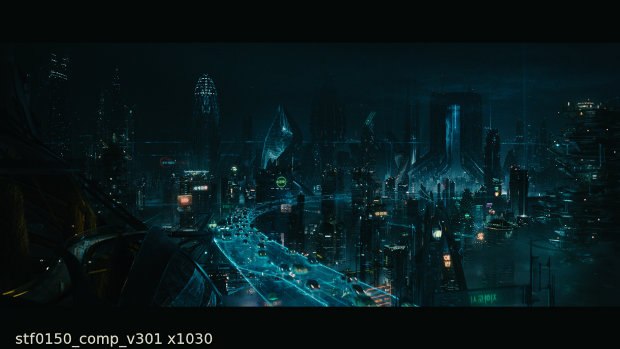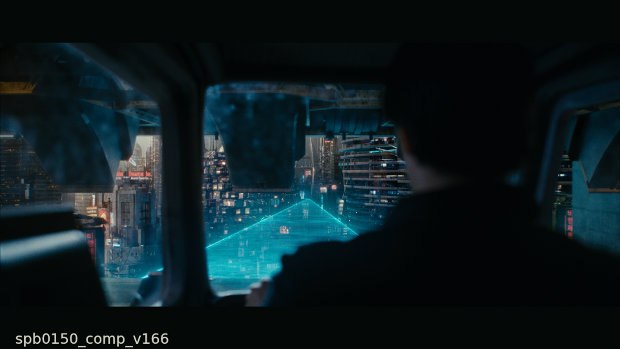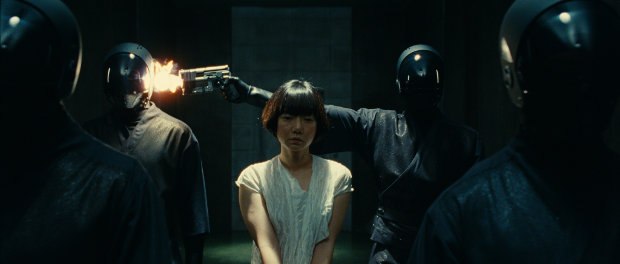Dan Glass talks Cloud Atlas VFX and working with the Wachowskis again.
Dan Glass is no stranger to either the Wachowskis or cosmic movies. Thus, he was able to segue from Terrence Malick's The Tree of Life to Cloud Atlas knowing what to expect and drawing on his previous experience with the sibling directors on The Matrix trilogy, Ninja Assassin (which they produced) and Speed Racer. However, Cloud Atlas was a different challenge entirely, with six stories about reincarnation spanning 500 years featuring the same actors in multiple roles (headlined by Tom Hanks and Halle Berry); a mash-up of genres; and three directors split into two production units (with Andy and Lana Wachowski sharing one and buddy Tom Tykwer tackling the other).
Fittingly, as chief creative officer of Method Studios, Glass was in a position to divide the VFX production supervision with Stephane Ceretti of the London facility while at the same time making full use of Method's capabilities in LA, London and Vancouver. But logistically it also made sense to bring in a host of other VFX studios, including Rise FX, Scanline VFX, Trixter, Black Mountain, Arri, Lola, Bluebolt, Exozet, Gradient, One of Us, and even ILM for a spectacular chase sequence.
"We spent three weeks working with the script as a group trying to understand how we might cost and approach the movie itself," Glass recounts. "No small feat, of course. I often felt that the [assistant directors] probably had one of the toughest jobs in terms of the most insanely complicated schedule you could probably conceive. With the brilliant but impossible idea of trying to include the actors in multiple roles in every story just meant that everything was dependent on everything else. Early on, [first assistant director] Terry Needham said we could afford one day's slippage on one of the units on our 60-day shoot schedule. And on day three, Halle Berry broke her ankle. And what we thought couldn't happen, had to happen, which was they had to rejig everything. It threw a curve ball into what was already exceedingly challenging. They worked around it and added some visual effects shots. Her limp was a creative throw in. They came up with the idea that her leg gets shot by an arrow.
"The six stories made it exciting and interesting but it meant that we could divvy things up quite a lot. Because of the complexity, because of how quickly they wanted to get an edit and a temp version together, we involved quite a few companies. In the end, it meant a lot of [effort] in design, continuity and administering all those things. But it also brought a lot of fresh ideas."
After some good-natured sparring back and forth between the directors, the Wachowskis ended up with the first story [1849 in the South Pacific], and the latter two: the Sonmi [Doona Bae] revolution in Neo Seoul, and the Zachry [Tom Hanks] finale after the fall.
Sonmi had the most visual effects. "As with editorial, once you got into post, it made sense to treat it as one movie," Glass continues. "The Somni was the largest portion of work and there wasn't really one place to put it all, but so much of it was linked, especially the exteriors, so I arranged for Method to handle it in LA, Vancouver and London. We set up a structure where they shared common assets. London did concept and matte painting, which is their specialty. ILM was additionally brought in on the Sonmi sequence to handle the chase through the city, which comprised two dozen shots. We knew it was the biggest complexity in scale and that it would be needed early on for trailer material and we wanted someone with firepower. Scanline did the end of the chase in the Reservoir Tube because of their water expertise and because they were based in Germany. They also handled the Slaughter ship and the Hover ship."
Neo Seoul, which was partly inspired by Blade Runner, is a dystopian world where the oceans have risen above ground and the wealthy keep building higher and higher and the poorer communities are under constant threat. So you've got great walls holding out the water and areas that are half-submerged have buildings poking out from underneath, with floating slum dwellings latched onto some of the structures.
"As with any science fiction film, we had to develop a lot of technology, and the directors had the idea of this transit system that was floating almost in some kind of plasma," Glass explains. "But we created a logic behind it with the vehicles feeding off some central control system. We imagined that on the central control system everything ran at the same speed, but that's visually very boring, so we broke it up and created traffic jams, which was more interesting."
They wanted the screen devices known as Orisons to be original as well, so they surrounded the characters with an app that hovers on its own even more so than in Minority Report. And it was opaque but still three dimensional.
Weaponry too was unique. They conceived of a handgun with a comic book-like muzzle flash that has black dots that comes out of the early graphic novels of Jack Kirby. They described it as extracting energy out of the atmosphere and creating areas void of mass.
The VFX was also applied subtly to some of the characters despite an emphasis on prosthetics. For Hae-Joo Chang, the heroic revolutionary played by Jim Sturgess during the Sonmi sequence, Method LA adjusted and replaced eyelids in close-up and sometimes added eyelashes and new eyeballs while keeping the essence of the actor intact.
For Hugo Weaving's Nurse Noakes, the prosthetics looked too much like a mask and so they recruited Lola, which worked wonders on Skinny Steve in Captain America. They applied their distinctive 2.5D warping and tucked in some of the jaw line and neck to make the head look more human and the face more feminine.
"I'm constantly trying to find ways that you adapt the visual effects process to fit whatever the needs are," Glass concludes. "Tree of Life was the ultimate distance away from a typical high-tech production. This was somewhat in the middle. So for us, it was trying to bring the level of sophistication and flexibility that they're used to and not impede their process. And the way the movie came together, it was just being able to react with great speed because, especially in the Sonmi area, they needed good, representative material. They love being collaborative and to that end we achieved more than we could have in any other way."
--
Bill Desowitz is former senior editor of AWN and VFXWorld, the owner of Immersed in Movies (www.billdesowitz.com), a columnist for Thompson on Hollywood at Indiewire and author of James Bond Unmasked (www.jamesbondunmasked.com), which chronicles the 50-year evolution of 007 on screen, featuring interviews with all six actors.




















